There were some smiles and comments from a few friends at us being 30minutes adrift to catch our flight to Manaus. This was nothing compared to the delays we incurred flying into Salvador following a late departure, diversions due to bad weather and a change of aircraft which we nearly missed! But on this occasion we weren’t concerned given we had somewhere to stay and a taxi booked to pick us up from the airport. We finally arrived at the pousada about 1am having been travelling all day and found that the cheery nightman, who spoke only Portuguese, just a tad over the top for our tired minds and weary bodies.
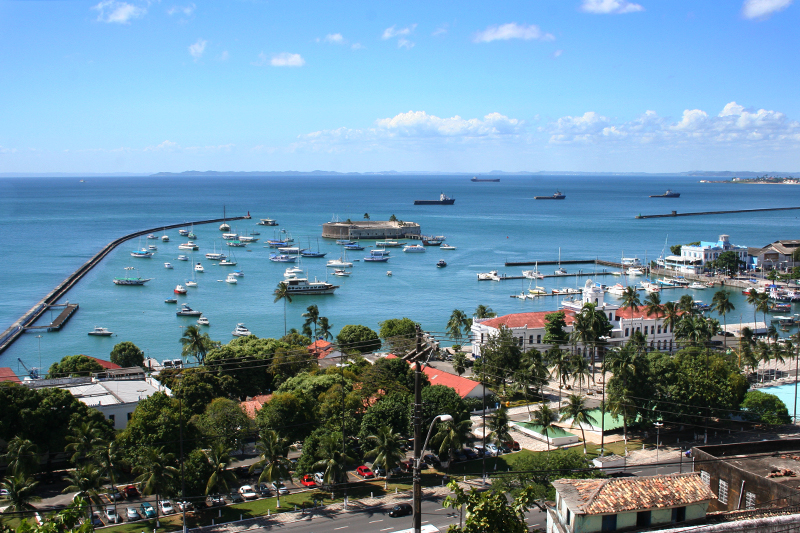 Salvador is one of those cities that, after reading about it, inspires you to want to embrace the city and the strong African culture that imbues every aspect of this lively and vibrant place. It’s wild. Salvador is the third largest city in Brazil and the capital of its state, Bahia. Many moons ago, 1550, it was the original capital of Brazil having a large natural port for the Portugese to import slaves and export coffee, tobacco, sugar and precious metals. Someone with a sense of rhythm decided to move the capital to Rio but then a soldier with hundreds of pips on his shoulder decided that the capital needed to be in the centre of the country and it moved to a purpose built city called Brasilia.
Salvador is one of those cities that, after reading about it, inspires you to want to embrace the city and the strong African culture that imbues every aspect of this lively and vibrant place. It’s wild. Salvador is the third largest city in Brazil and the capital of its state, Bahia. Many moons ago, 1550, it was the original capital of Brazil having a large natural port for the Portugese to import slaves and export coffee, tobacco, sugar and precious metals. Someone with a sense of rhythm decided to move the capital to Rio but then a soldier with hundreds of pips on his shoulder decided that the capital needed to be in the centre of the country and it moved to a purpose built city called Brasilia.
On November 1st 1501, All Saints Day (obviously), Amerigo Vespucci sailed into the bay and, as the first European to see it, he named it after the day of his arrival. The city was founded in 1550 when fortifications were built to protect the area from Dutch and French invasion and by the 18th century it was the most important city in the Portugese Empire after Lisbon, ideally situated in a safe, sheltered harbor along the trade routes of the New world.
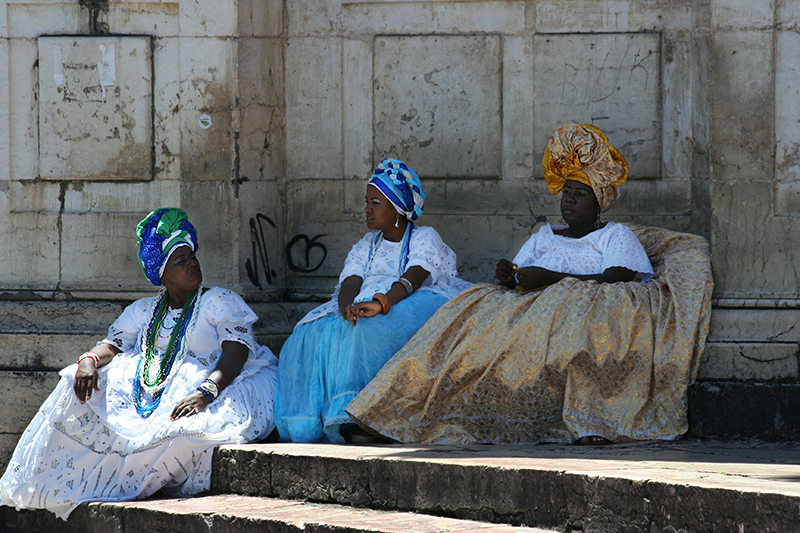 Salvador is often referred to as Bahia, dubbed ‘Africa in exile’ and is home to a heady mixture of colonial buildings, beautiful beaches, African culture and pulsating music. African slaves were shipped here in large numbers and their influence permeates the city: food sold on the street is the same as in Senegal and Nigeria. While the slaves are long gone, the presence of African culture and influence is powerful in the population, food, music and dance. The Bahianas (black women) still dress in their traditional 18th century costumes and can be found in most tourist areas posing for photographs and trying to lure tourists into shops. Occasionally, a group of them will be sitting on the church steps having a gossip like all women the world over.
Salvador is often referred to as Bahia, dubbed ‘Africa in exile’ and is home to a heady mixture of colonial buildings, beautiful beaches, African culture and pulsating music. African slaves were shipped here in large numbers and their influence permeates the city: food sold on the street is the same as in Senegal and Nigeria. While the slaves are long gone, the presence of African culture and influence is powerful in the population, food, music and dance. The Bahianas (black women) still dress in their traditional 18th century costumes and can be found in most tourist areas posing for photographs and trying to lure tourists into shops. Occasionally, a group of them will be sitting on the church steps having a gossip like all women the world over.
The pulse of the city is Candomble, an Afro-Brazilian religion in which the African deities of Nature, the Sea and Creation are worshipped. Catholicism may be the official religion but there are ‘only’ 166 churches whereas there are over 1,000 Candomble temples.
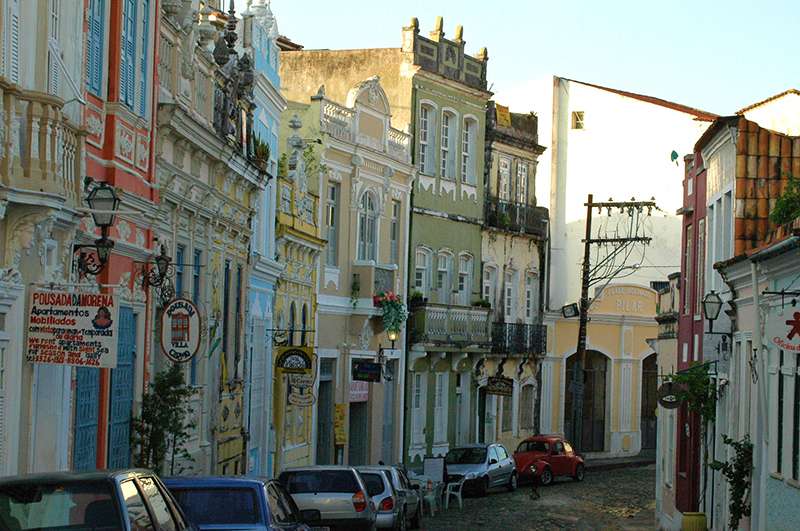 We were staying in the historic centre of the city where the original colonial homes, churches, squares and monument buildings are situated. The streets are all cobbled, the buildings are all painted in bright colours and this area sits high up on a cliff that dominates the landscape overlooking the magnificent Bahia de Todos Santos, the largest natural harbour in Brazil at 1,100 sq.km with 38 islands dotted around.
We were staying in the historic centre of the city where the original colonial homes, churches, squares and monument buildings are situated. The streets are all cobbled, the buildings are all painted in bright colours and this area sits high up on a cliff that dominates the landscape overlooking the magnificent Bahia de Todos Santos, the largest natural harbour in Brazil at 1,100 sq.km with 38 islands dotted around.
The pulsating rhythmic music and drumming is often accompanied by dancers who athletically combine an African type of martial arts with a heavy beating dance. This dance is called ‘Capoeira’ a martial art developed from the traditional foot-fighting technique introduced from Angola by the African slaves. The music is by drum, tambourine and berimbau, an arched bow-like stick with a single string and round, hollow, bowl at the end that reverberates the sound of the bow string being plucked. The basis of their rhythm is the drum, as with ‘Afro Blocos’. During the day it is possible to see displays of the capoeiristas in public areas like the Pelourinho Square but at night time the sound takes on a different dimension. Our last night in the city centre was dedicated to music for some reason or another – probably just an excuse to have a jolly good party. Every street had some form of band playing, singing or drumming – the sounds filled the ordinary silence of a hot night and it just explodes. The narrow cobbled streets bordered by tall town houses provided a natural chamber for wild loud acoustics like we’ve never heard before. Late in the evening we followed one of the larger ‘Afro Blocos’ band, a drum based troupe behind which crowds had gathered to slowly follow them through the streets. The rhythm was driven through enormous drums with its bumbum bumbum bum anchorbeat. The power of this drumming is phenomenal. We managed to get up close behind the band where followers were stomping a type of line dance swaying back and forth across the street. You could feel the beat of the drums rumble through you, pulsating pressure on your body, the sound obliterated any chance of talking and the swaying of the dance was hypnotic. This was just a mid-week night, the annual carnival in Bahia is the largest in the world and it is said that there are 1.5m people dancing in the street at any one time. Wow!
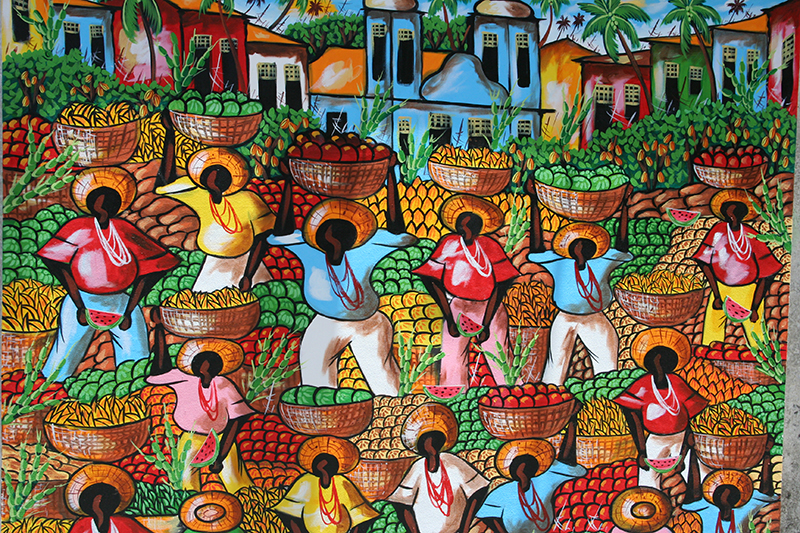 Another aspect of Salvador that is very present and obvious is colour – everywhere from buildings to artwork, from clothing to ribbons which hang from doorways, keyrings, wrists and bags. The artwork is spectacular and reflects all aspects of their African-Brazilian culture and would brighten up any city. Unfortunately, the ribbons are often used in a tourist scam; a local Bahianas will offer you a ribbon as a wish, for luck and safe travels or whatever you want. Having placed the ribbon around your wrist and secured several knots you are then asked for money. Of course you can’t get the bloody thing off your wrist because of the knots and you get a lot of hassle if you try to walk away. Debbie was stupid enough to get collared a second time – but apparently she likes the ribbons, now hanging off her backpack!
Another aspect of Salvador that is very present and obvious is colour – everywhere from buildings to artwork, from clothing to ribbons which hang from doorways, keyrings, wrists and bags. The artwork is spectacular and reflects all aspects of their African-Brazilian culture and would brighten up any city. Unfortunately, the ribbons are often used in a tourist scam; a local Bahianas will offer you a ribbon as a wish, for luck and safe travels or whatever you want. Having placed the ribbon around your wrist and secured several knots you are then asked for money. Of course you can’t get the bloody thing off your wrist because of the knots and you get a lot of hassle if you try to walk away. Debbie was stupid enough to get collared a second time – but apparently she likes the ribbons, now hanging off her backpack!
The beaches on the Atlantic coast provide a peaceful, if not busy, break from the city. South of the historic centre is a fort and famous lighthouse – both built on the original landing site of the Portuguese. The lighthouse was the first one built in the Americas. From here the Avenida Oceanica follows the coast line to the beach suburbs of Salvador – of which there are many. En route the bus passes small fishing towns where the traditional ‘jangada’ is still used extensively. The jangada is a small raft peculiar to the north eastern region of Brazil used alongside the dug-out canoe mostly for fishing.
We decided to crash for the day at one of the loveliest beaches – Flamingo – popular with the locals rather than tourists primarily due to the lack of hotels in the immediate vicinity. Plus a very strong influence on our decision was the local tip given to us by our friendly pousada owner, not go to any other beaches due to sewage and pollution!! Not a tough decision. So 1.5hours later we pile off the bus in a random side street with no bus stops and are assured that the bus will pick us up, to return, on the other side of the road – easy. We find our way to the beach; quickly recognize that the only way to get any space on the beach is to hire/use a table, umbrella and chairs from one of the bars. Thereafter they serve you drinks and surprisingly good food swiftly. Debbie was clear she wanted a table near at the front, close to the water’s edge, where there was plenty of space – as the tide came rolling up the beach we realized why! On leaving lots of buses did actually pass the said street corner but none that were going our way so we cheated slightly and hopped into a taxi rather than wait – it was getting dark after all!
I have been asked how my Spanish has been getting along since landing in Ecuador two and a half months ago. I am sorry to report that the answer is backwards. It has been a mixture, of indolence, English and incomprehensibility that have combined to undermine the fluency of my undoubted ability to speak Spanish. In Ecuador it was easy. They spoke ‘proper’ Spanish of the kind I had been taught during many sweaty hours in Andreas’ classroom. What’s more they understood my poor Spanish and we all got along famously. Thereafter, things went downhill. In Lima, they speak Castilian which is not really Spanish at all. The words are not the same and in an attempt to be different (rather like the French) they pretend not to understand what I am saying even when using simple words. I mean what is the problem understanding ‘Donde esta uno Supermarcado’? You don’t need any linguistic ability whatsoever to understand the question but this floored several people entirely. It does not do much for my confidence when people cannot understand their own language.
Being English doesn’t help either. It’s the world’s second language and the common means of communication when people from different countries meet up or are thrown together. On almost every tour, the guide has spoken English and our fellow travelers use English as the common language. What chance do we have?
Indolence doesn’t help either.
This Portugese stuff is incomprehensible. We were told it was very similar to Spanish but it sounds more like Russian with its guttural pronunciation. And the words are not similar at all: how can gracias and obrigado be labeled even vaguely the same? True, if it’s written down and stripped of all the strange guttural sounds that accompanies the spoken word, it is possible to work out the meaning of a lot of sentences but Debbie and I had to leave a restaurant one evening because, despite studying the menu for some time (with our glasses on) we had no clue as to what was on offer. It seems to me that Portuguese is similar to Spanish in the same way that English is similar to Chinese (or Welsh).
The other problem with Portugese is that it is not a pretty language. Listening to songs grates upon my operatic sensibilities and it does not help that most Brazilians cannot sing for toffee. The Taxi driver who took us to the airport thoughtfully played a DVD to us of some chap and his girl performing in concert. I never thought I would miss pan pipe music. Their efforts were so poor that they would not get through one round of a Saturday night’s X Factor. I suppose, that is why dancing to drums is so attractive.
Whereas with foods we have been more successful, not withstanding the comment above. Debbie has struggled throughout South America so far and is bored with soggy salads, some non-descript cheeses and an awful lot of rice. A few exceptions have been ‘empanadas’ and some fish, though the piranha has a strong unlikeable taste. However we did find a local dish in Salvador called the ‘moqueca’ – fish and seafood (as you chose) cooked in a sauce made from coconut milk, tomatoes, green peppers and served with rice and a very hot sauce that you add at your discretion. Debbie is food-happy at last and ate this for 3 nights running!

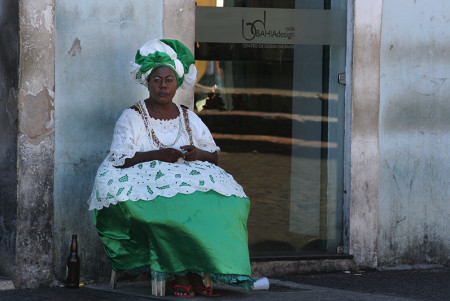
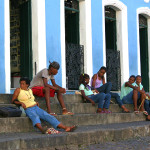

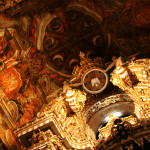

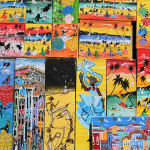
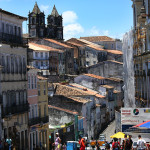
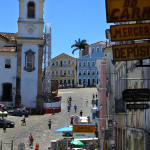
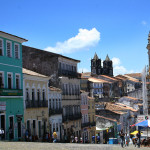
No comments yet.